Solo show by Lena Becerra at HAIR ARI
514 Elizabeth Street, Melbourne, Australia.
Follicle refers to both the ovarian secretory gland—a cavity or sac—and a dry fruit derived from a single carpel, which opens on one side only to release its seeds.
Mouth like follicles withhold or carry an unnervingly relatable nature, introducing a visceral, synesthetic mirroring experience. Here, we reflect on other organic entities as they reflect on us -creating a continuous loop of unsettling kinship.
At the centre of this installation, a tension emerges between hard, cold steel cartilage and fluid, pulsating motion. Peristaltic pumps, mimicking the process of peristalsis—used in biological systems such as the gastrointestinal tract—create an artificial lifelike rhythm. Stringed tubing metastasizes like arteries across the exhibition space, a hybrid circulatory system carrying both physical and metaphorical nutrients.
Challenging traditional research methods that brutally dissect and structurally archive matter to align with dominant Eurocentric colonial knowledge structures, this work offers an alternative perspective, reframing dismemberment as both generative and gestational.
Here, as the body appears dismembered rather than dissected, each fragment is held by peripheral devices as though they continue their life cycle in isolation. This fragmentation resonates as a fractal experience of being, where each part recapitulates the whole, mirroring the infinite branching structures of existence. The concept of fractal capillarity extends this idea, suggesting a networked fluidity that transcends individual boundaries, linking disparate elements in an intricate and recursive flow.
Unfolding like a chart, unconscious associations draw information from the unknown, evoking a collective unconscious that plays with uncanny kinships. These connections blur the lines between organism and mechanism, life and death, known and ethereal.
Prosthetic surfaces penetrate soft organic and synthetic flesh, creating a hybrid, living membrane.
Soft and hard, fictional and speculative, the morphologies used in this installation carry information which is ancestral and migratory. Here, the artist explores from her own latin diaspora perspective relationships and connections of inherited source tracing symbiotic patterns and textures across the global south.
In this feral and speculative exploration of non-human entities, hybrid ecosystems gestate otherworldly phenomena. The installation invites us to envision a more fluid, circular and relational existence—where human and non-human forms coalesce, creating spaces for kinships yet to be imagined.
17 January - 9 February 2025











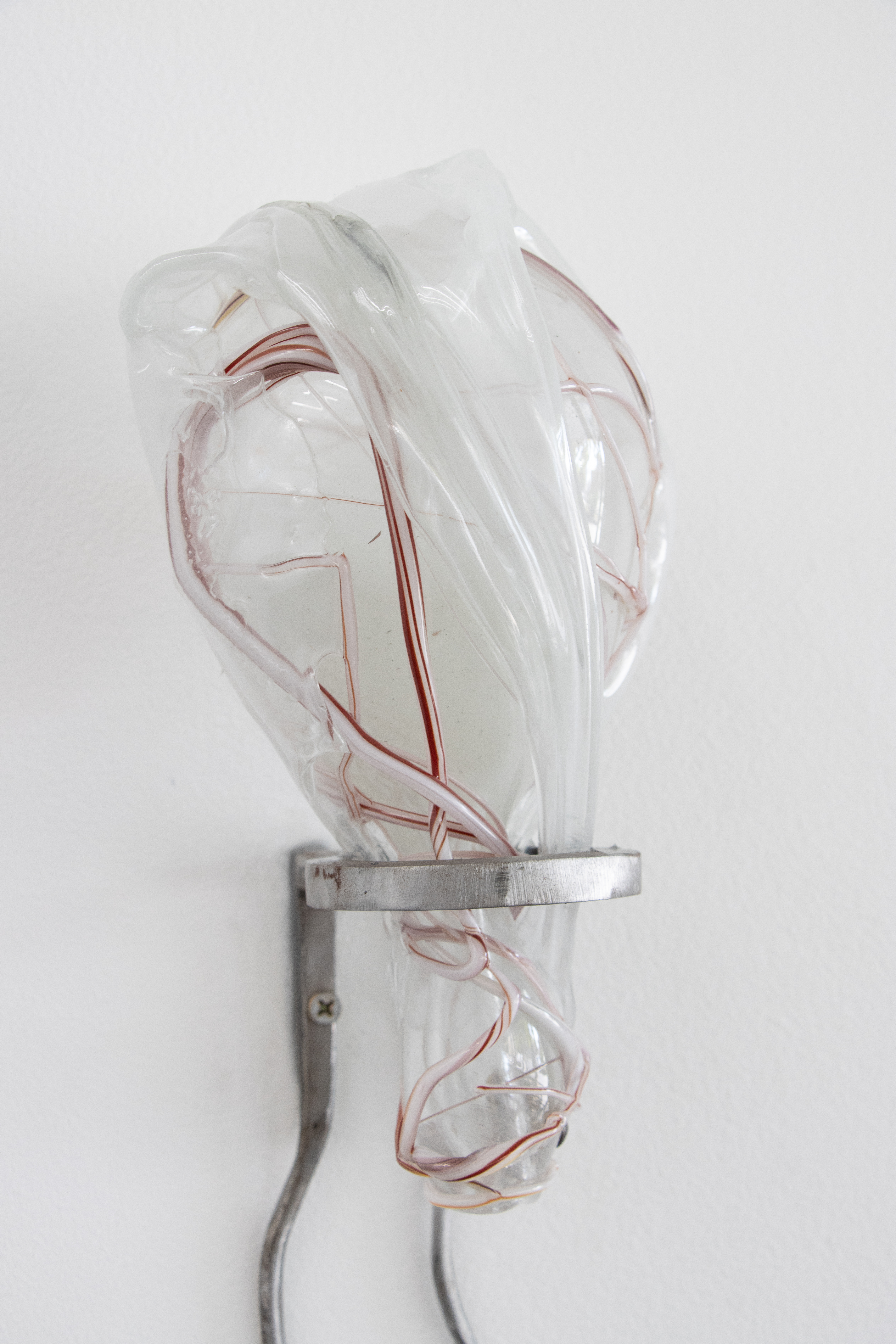

October 2024 in Barcelona, Spain
In Ex0phycology, hybrid creatures explore the breeding morphologies of the gestational processes of worlds and -beyond human- relationships that operate directly on the dermis of the social fabric and, therefore, in the building of a web of collective memory.



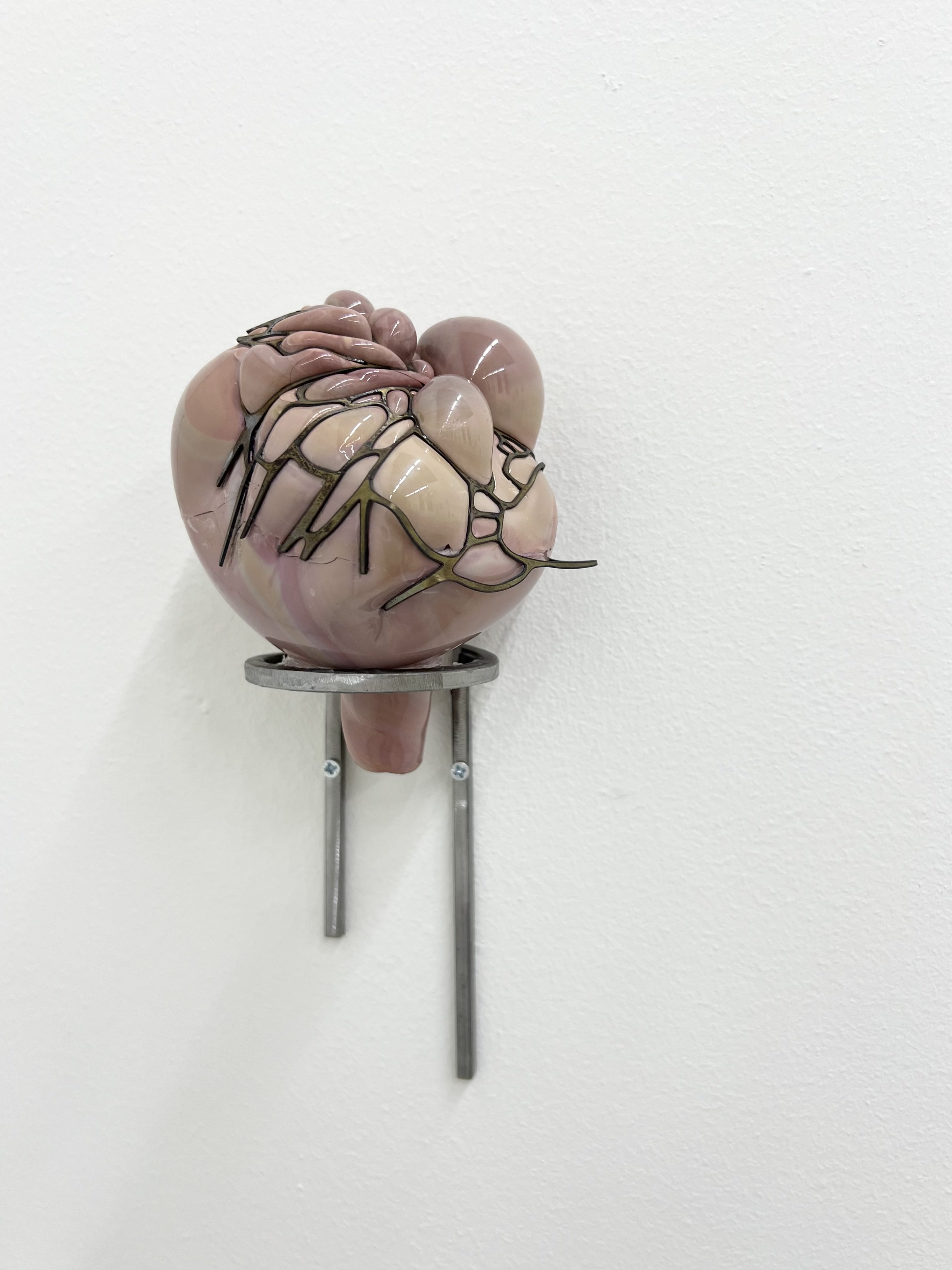

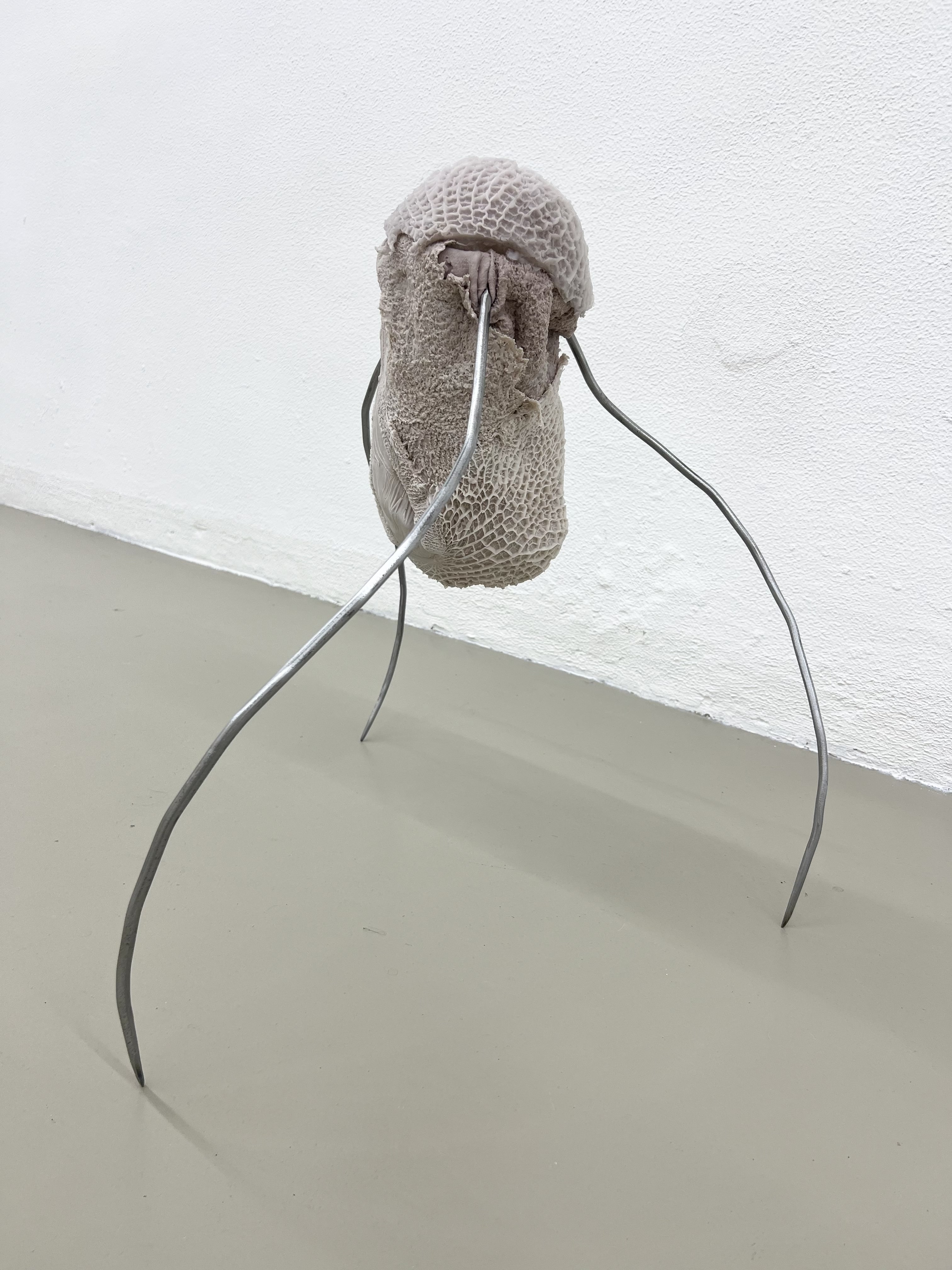


The work consists of steel structures, blown glass elements, peristaltic pumps, and prosthetic-grade silicone tubing. These components form a pulsating circulatory system where air and memory flow through fragmented bodies. Glass extremities vibrate gently, connected by tendrils of silicone, evoking a networked anatomy that leaks, breathes, and resists static classification.
Built on-site through intensive manual fabrication, welding, and fluid experimentation, the piece mimics an organism in mid-molt—caught between technological residue and living tissue. It invites viewers into a suspended temporality where gesture and decay co-exist, blurring the boundaries between object and organism, self and environment.
Rooted in diasporic, technofeminist inquiry, Tentakelförmig Exoskelett proposes a form of collective memory that moves through viscosity, rhythm, and touch—gesturing toward a feral kind of kinship beyond the human.
(Spanish version below photographs)
Curated by: Agustina Rinaldi



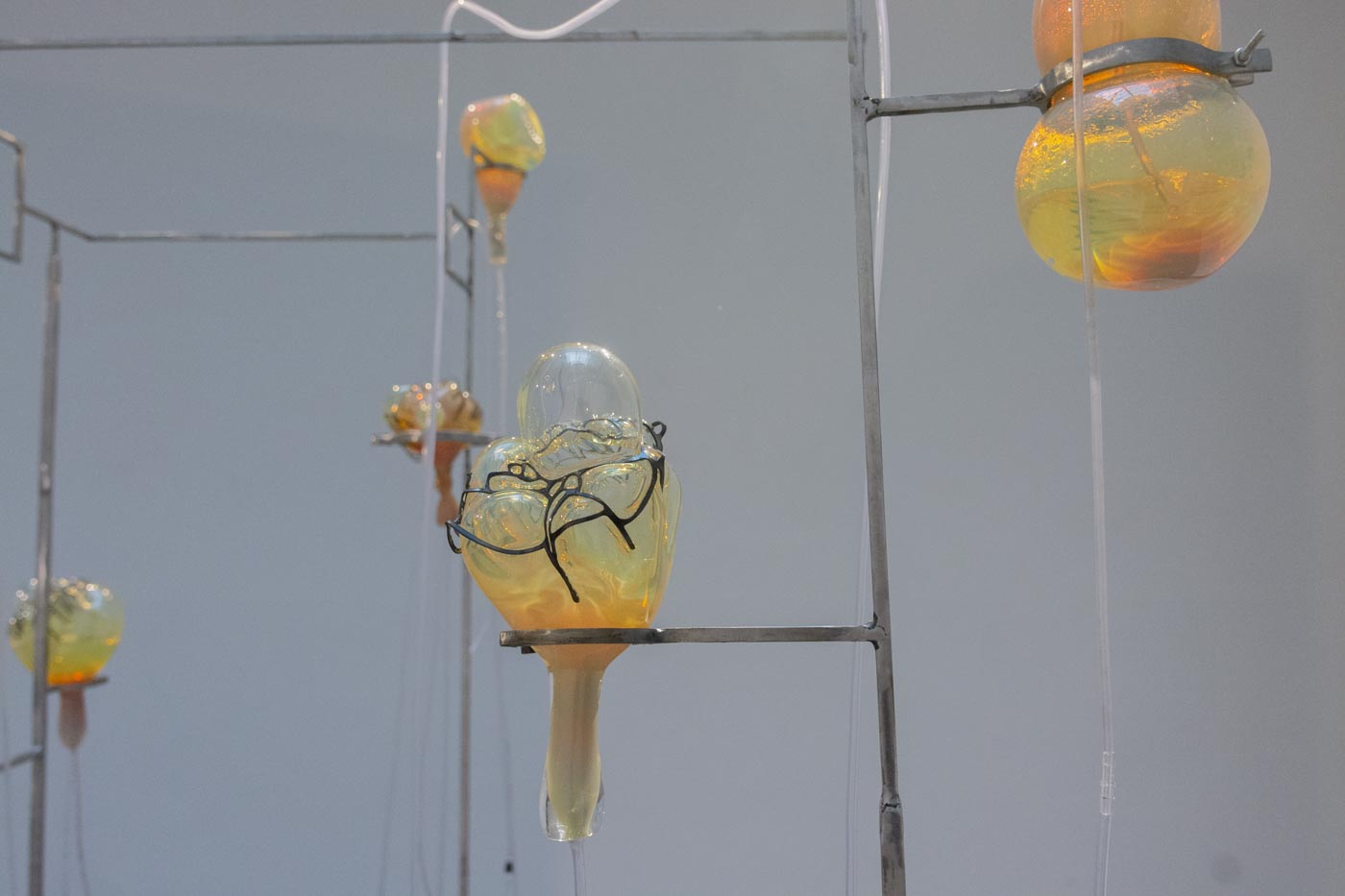


(ES)
Tentakelförmig Exoskelett en exhibicion grupal Tecnopoiesis en Casa Nacional del Bicentenario
Mezclando la idea de investigación científica con cuerpos xenomorfos, esta criatura artropoide explora las morfologías reproductivas del proceso gestacional de mundos y las relaciones más allá de lo humano, que operan directamente en la dermis del tejido social y, por ende, en la construcción de una red de memoria colectiva.
Este organismo sintético, de naturaleza cíclica, ahora se presenta como un cuerpo exoesquelético en expansión. Su estructura de tentáculos metálicos y piezas de vidrio soplado, conectadas a un sistema neumático pulsante, imita un organismo que respira y late, dialogando visceralmente con la etapa líquida de la materia. La expulsión rítmica de aire y la vibración de los tentáculos invitan a reflexionar sobre un tiempo suspendido, donde pasado y futuro perforan el presente simultáneamente.
Las conexiones de silicona entre las extremidades de vidrio desvelan la naturaleza interconectada de los vasos, creando formas autónomas de expresión entretejida que habitan estos cuerpos como recordatorios de nuestra condición de entidades en flujo. Sin embargo, llevan consigo información ancestral, programada antes de nosotros: fluidez, viscosidad y transparencia, como condiciones inevitables del deterioro del yo.
Profundamente entrelazado con la naturaleza de lo pantanoso, este exoesqueleto parece reproducirse a través de la humedad atrapada en el vidrio y crecer desde el estanque simbólico de su propio ecosistema. Podemos pensar en esta vida parasitaria como el resultado de entrar en un estado de co-participación con otras formas de existencia.
Ya no confinado en una vitrina como una criatura de laboratorio, el paradigma de quién observa a quién se difumina, generando una inquietante sensación de dependencia mutua. El cuerpo exoesquelético se convierte así en un espacio liminal: un ser vivo habitando dentro de otro ser vivo, coexistiendo en un estado continuo de transformación.
Curaduría: Agustina Rinaldi
Rooted in Ernst Kapp’s notion of organ projection —the idea that tools and technologies emerge as unconscious extensions of the human body— Die organprojektion II operates as a speculative organ: a suspended anatomy through which externalized matter reveals interior logics. In this soft-mechanical installation, prosthetic tissue, blown glass, and circulatory fluids converge into a humid body-in-process, caught between pre-life and metamorphosis.
Oscillating between the gestational and the surgical, the installation evokes an ecosystem of acephalous entities—semi-formed beings suspended in a choreography of mutation. Their bodies bear traces of interrupted procedures: limbs half-severed, structures tentatively sutured, organs that propose function without fulfilling it. At the center, a larger cyclic form circulates opaque fluid in continuous motion—neither beginning nor end—recalling lunar rhythms and the metabolic pulse of self-altering systems.
Here, repair is not a return to origin, but a speculative act of continuity: assembling bodies that metabolize instability, that vibrate at the edge of meaning. Becerra’s postnatural sensibility privileges porousness over precision, proposing prosthetics not as corrections, but as co-inhabitants—surfaces of contact for what resists categorization.
In the context of Tecnopoiesis, the work proposes a rupture from binary logics—human/machine, self/other, tool/body. It becomes a speculative prosthesis for an ontological shift: a translucent organ that does not reveal function, but invites relation. This is not a machine of precision, but a host for liminal life—its pulses echoing the possibility of cohabiting otherwise.

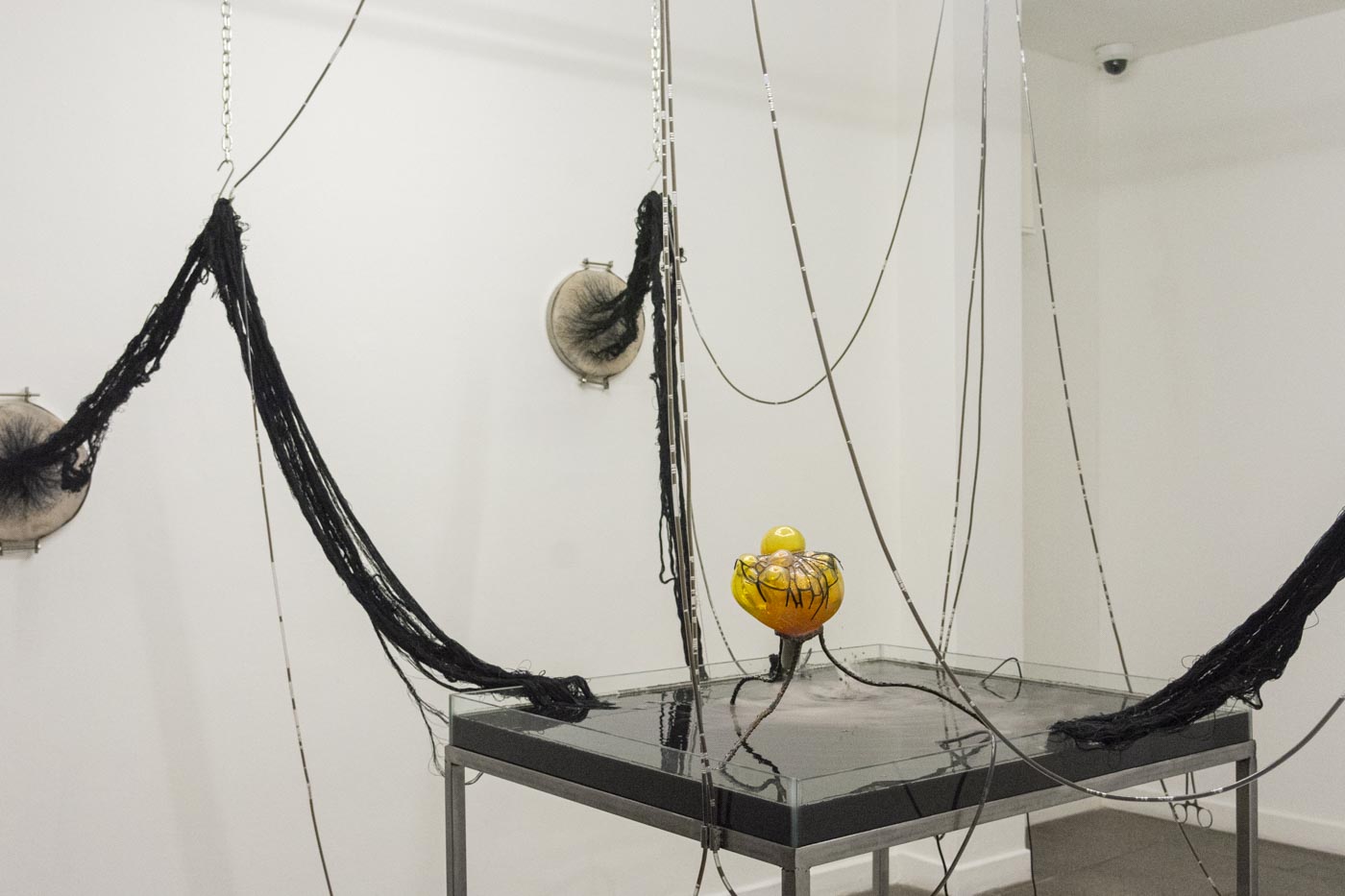

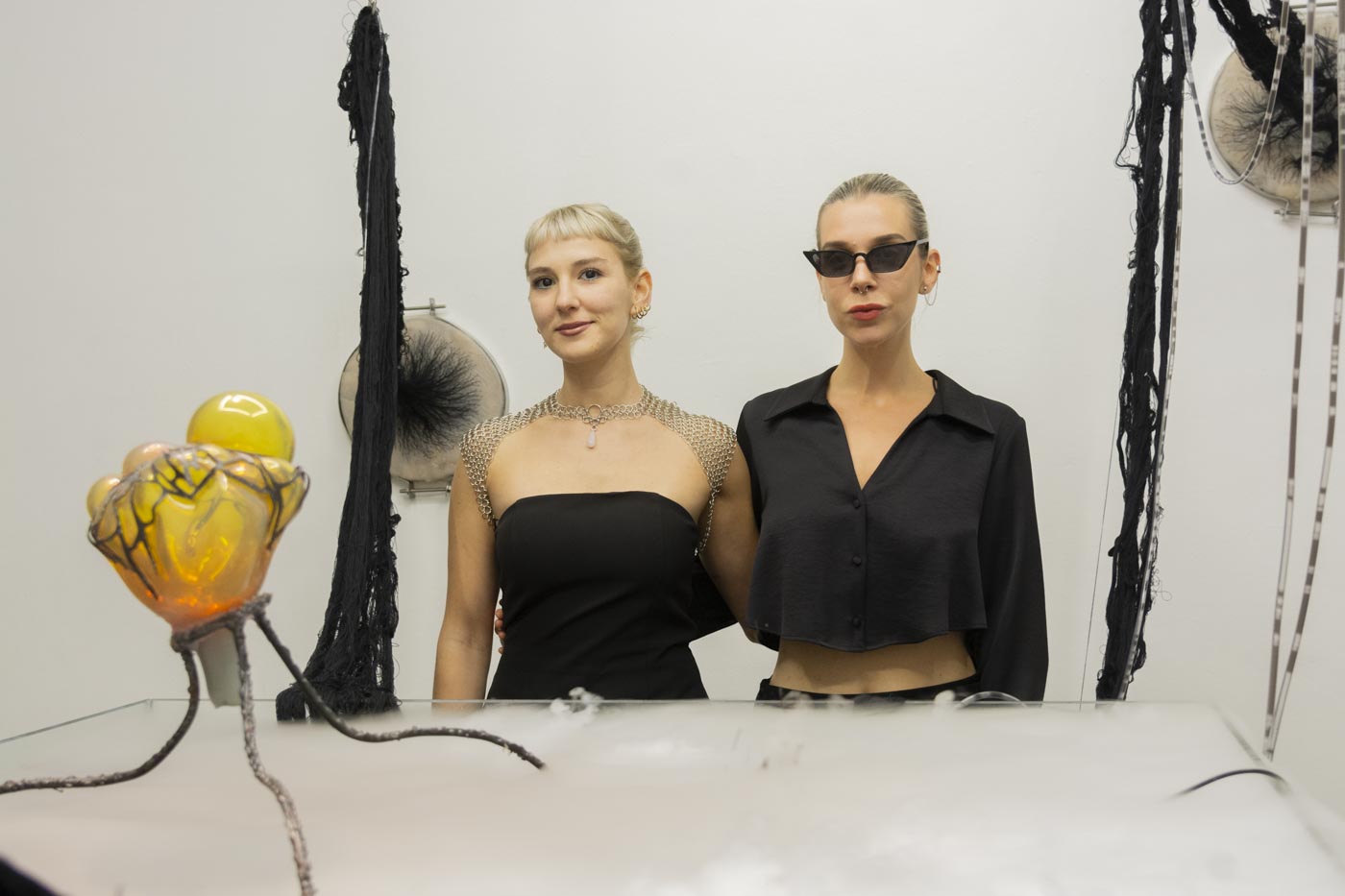
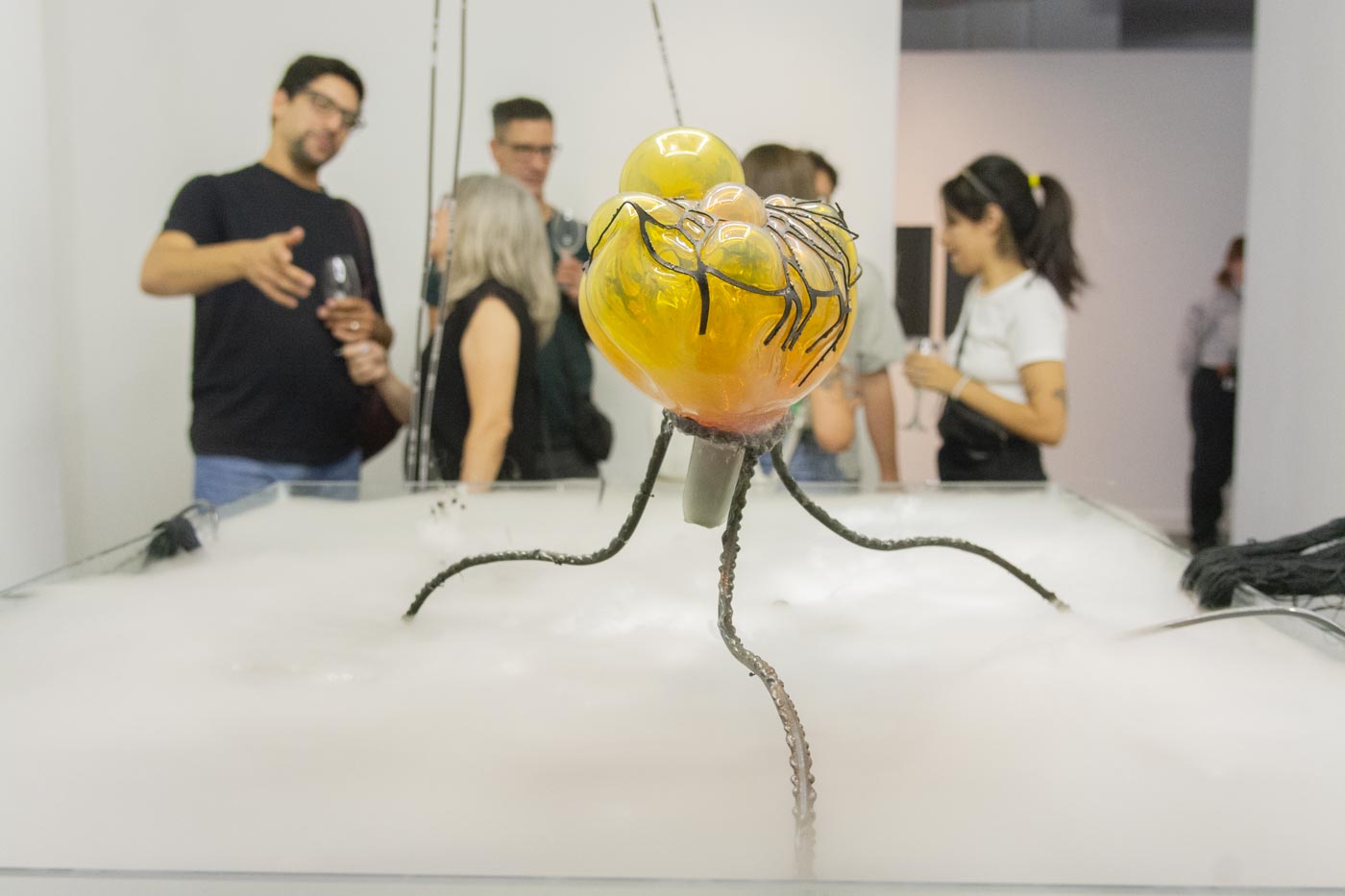




(ES)
Die organprojektion II en exhibicion grupal Tecnopoiesis en Casa Nacional del Bicentenario
Una nueva superficie de contacto posthumana donde se ponen en escena otras construcciones posibles de lo real -sintéticas e inestables- se alza a partir de la reivindicación del saber técnico. Mediante herramientas tecnológicas duras y blandas -desde el entrenamiento de modelos de IA hasta la costura y la manipulación de materia en tensión- los artistas de Tecnopoiesis, el acto final del programa Intra|acciones: cruces posthumanistas en el arte contemporáneo, alcanzan la instancia más elevada de la técnica: la creación artística.
El saber hacer se enraiza en la obra de arte, autónoma y enigmática. Al entrar en relación con el observador mediante la experiencia estética, irrumpe el desocultamiento. Lo latente, lo que estaba aguardando a ser desvelado, se trae al presente; se pone ahí delante en la emergencia de la apertura del ser en lo ente. Hay ruptura. Lo cotidiano entra en conflicto. Lo impensado se torna evidente, casi familiar. Quien observa se vuelve uno con la pieza y, en ese devenir sujeto|objeto se impone, por un momento, la verdad del mundo y de sí mismo en relación con él.
En ese doble despertar que asalta al artista en el acto de crear y al visitante en la fiebre del observar, en ese "ser ahí", donde lo claro se pone sobre lo oscuro y donde todo es a uno lo que uno es a todo, se alza la posibilidad de imaginar otro horizonte posible en el que humanos, animales, plantas, máquinas, sistemas cibernéticos y microorganismos encuentren el equilibrio en una plataforma posdualista que nos impulse a intra|actuar con lo viviente.
Curaduría: Agustina Rinaldi
Glass, steel.
‘Liminality’ group show curated by @louisedesplaces at @culterim_
Berlin, Germany. March 2024.
